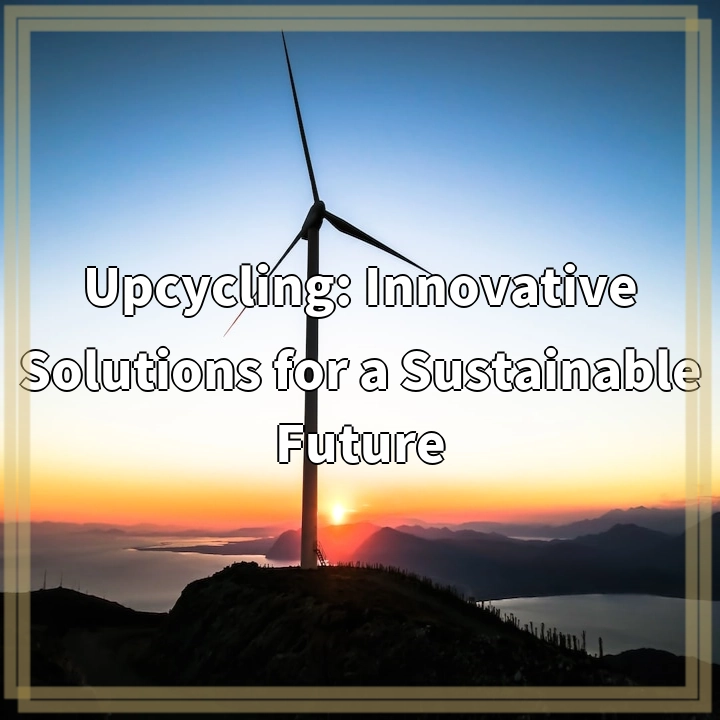
What is Upcycling?
Upcycling is a creative and sustainable practice that involves transforming waste materials or unwanted products into new and useful items of higher value. Unlike recycling, which breaks down materials to create new products, upcycling adds value by repurposing and redesigning existing materials. It encourages creativity and resourcefulness while reducing waste and the consumption of new resources.
Real-World Problems Associated with Upcycling
While upcycling offers numerous benefits, there are some challenges and considerations that need to be addressed. Understanding these real-world problems can help us develop effective strategies to maximize the potential of upcycling and overcome its limitations. Here are a few such issues:
1. Availability and Accessibility of Suitable Materials
One of the main obstacles in upcycling is sourcing suitable materials. It can be challenging to find discarded products or waste materials that are appropriate for upcycling projects. Additionally, the accessibility of these materials may vary depending on geographic location or personal networks. Efforts should be made to establish networks or platforms that facilitate the exchange of materials.
2. Design and Functionality
Creating upcycled products that are both aesthetically pleasing and functional can be demanding. Designing items that appeal to consumers’ tastes and meet their expectations can be a significant hurdle. Attention must be given to ensuring that upcycled products are well-designed, durable, and fit for purpose to increase their appeal and usability.
3. Scale and Replicability
While individual upcycling projects may successfully create unique items, scaling up these efforts can be complex. Replicating the same design or process multiple times to achieve a larger impact can be challenging in terms of cost, time, and resources. Identifying ways to streamline production and increase efficiency will be essential for widespread upcycling adoption.
4. Consumer Awareness and Demand
Although there is a growing interest in sustainable products, upcycled items might still be relatively unknown to many consumers. Raising awareness about the benefits of upcycled goods and educating the public about the value and quality of these products is crucial. Building consumer demand and trust in upcycled products will drive the market towards more sustainable consumption habits.
5. Infrastructure and Policy Support
A supportive infrastructure and policy framework are essential for the widespread adoption of upcycling. Governments, organizations, and communities should establish systems that encourage and incentivize upcycling practices. This can include funding initiatives, providing access to workshops and training, and implementing policies that promote sustainable production and consumption.
Conclusion
While upcycling presents innovative solutions for a sustainable future, it is essential to acknowledge and address the real-world problems associated with it. By actively working towards solutions, such as facilitating material exchange networks, improving design capabilities, streamlining production, educating consumers, and implementing supportive policies, we can encourage the growth and impact of upcycling in creating a more sustainable world.

Solutions to the Real-World Problems of Upcycling
Addressing the challenges associated with upcycling requires a proactive approach. By implementing the following solutions, we can overcome the obstacles and maximize the potential of upcycling:
1. Establish Material Exchange Networks
Creating networks or platforms that facilitate the exchange of suitable materials for upcycling projects can address the availability and accessibility issue. This allows individuals and businesses to find and acquire the materials they need to create upcycled products.
2. Improve Design Capabilities
Investing in design skills and capabilities is crucial for creating upcycled products that are both visually appealing and functional. By focusing on innovative design strategies, incorporating user feedback, and prioritizing quality, upcycled products can gain wider acceptance and consumer demand.
3. Streamline Production Processes
Efforts should be made to streamline upcycled production processes to overcome challenges related to scalability and replicability. This could involve standardizing certain production steps, implementing efficient workflow systems, and leveraging technology for improved production efficiency.
4. Educate Consumers
Raising awareness about upcycled products and their benefits is key to driving consumer demand. Educating the public about the value, quality, and environmental benefits of upcycled goods can encourage more sustainable purchasing decisions and a shift towards embracing these products.
5. Implement Supportive Policies
Governments and organizations should enact policies that support and incentivize upcycling practices. This can include funding initiatives for upcycling projects, providing resources and training, and implementing regulations that encourage sustainable production and consumption.
Conclusion
By implementing these solutions, we can overcome the real-world problems associated with upcycling and unlock its full potential. Through concerted efforts in material exchange networks, design improvements, streamlined production processes, consumer education, and supportive policies, we can build a more sustainable future powered by innovative upcycling solutions.















